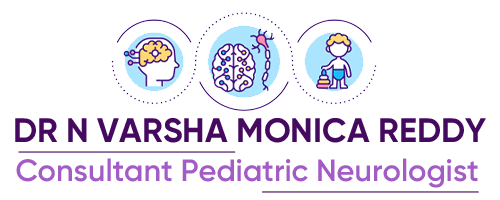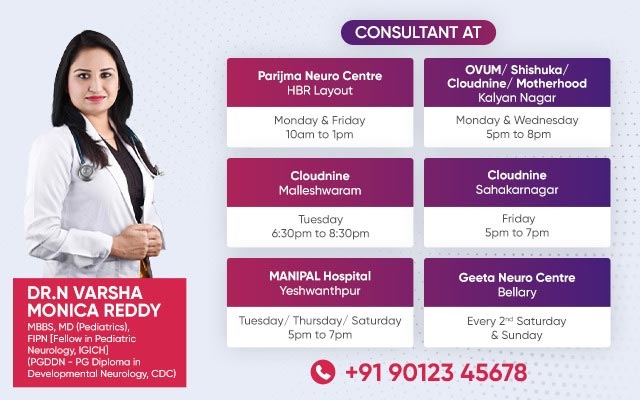Cerebral palsy (CP) is a group of disorders that affect a person’s ability to move and maintain balance and posture. CP is the most common motor disability in childhood. Cerebral means having to do with the brain. Palsy means weakness or problems with using the muscles. CP is caused by abnormal brain development or damage to the developing brain that affects a person’s ability to control his or her muscles.
Get the cerebral palsy treatment in Yeshwanthpur from Dr. N. Varsha Monica Reddy
The symptoms of CP vary from person to person. A person with severe CP might need to use special equipment to be able to walk, or might not be able to walk at all and might need lifelong care. A person with mild CP, on the other hand, might walk a little awkwardly, but might not need any special help. CP does not get worse over time, though the exact symptoms can change over a person’s lifetime.
All people with CP have problems with movement and posture. Many also have related conditions such as intellectual disability; seizures; problems with vision, hearing, or speech; changes in the spine (such as scoliosis); or joint problems (such as contractures).

What causes Cerebral Palsy in kids?
Cerebral Palsy happens when there is abnormal development of or damage to region of the brain that control motor function. This can occur before or during birth. Most cases of Cerebral palsy are congenital. Less commonly, CP can occur after birth. This is known as acquired CP and typically occurs from an infection or head injury.
In many cases, the specific reason for CP isn't known. It very well might be the result of an issue such as:
- Absence of oxygen to the brain
- Hereditary condition
- Infection
- Bleeding in the brain
- Serious jaundice
- Head injury
Who are risk of developing Cerebral Palsy?
A child is more in danger for CP due to any of the following:
- Preterm birth
- Inflammation of the placenta or amniotic fluid from an infection
- Blood clotting disorder
- Extremely low birthweight
- Infection with a virus
- Chemical or substance abuse during pregnancy
- Injury
What are the symptoms of Cerebral Palsy?
The symptoms rely upon what kind of Cerebral Palsy a child experience. The types and symptoms include:
- Spastic Diplegia: This is spasticity of the legs more than arms.
- Spastic quadriplegia: This is also known as tetraplegia. Quad and tetra mean 4. This is spasticity of all arms and legs.
- Spastic hemiplegia: Hemi implies half. This is spasticity that influences 1 side of the body, like the right arm and right leg.
- Spastic double hemiplegia: This is spasticity on both sides of the body. The amount of spasticity is different on each side.
- Athetoid CP: This is also known as dyskinetic CP. This is movement that can't be controlled. The movement is usually rigid and twisting.
- Ataxic CP: This influences balance that leads to unsteady walking. It likewise influences fine motor coordination. This makes it hard to do things like writing.
Are you concerned?
If you think your kid isn't meeting movement milestones or could have CP, contact your children neurology specialist in Yeshwanthpur or nurse and share your worries.
If you or your best cerebral palsy doctor in HBR layout is yet concerned, request a reference to an expert who can do a more detailed assessment of your kid and help with making a diagnosis.
Dr. Varsha Monica Reddy treats kids from birth into young adulthood. She makes sure to care your kids to the core of their problem, and advanced training and experience prepare her to meet child’s unique needs.
In many cases, Dr. Varsha Monica Reddy work as a team with pediatricians or other primary care doctors. she often works intimately with physical therapists, occupational therapists, and speech therapists to help your kid develop and figure out to the best of their potential. Moreover, she is the best pediatric experts who care for your children suffering with complex or serious clinical issues, like epilepsy, birth deserts, or hereditary problems. These are chronic conditions that need ongoing care and close follow-up throughout childhood and adolescence.

